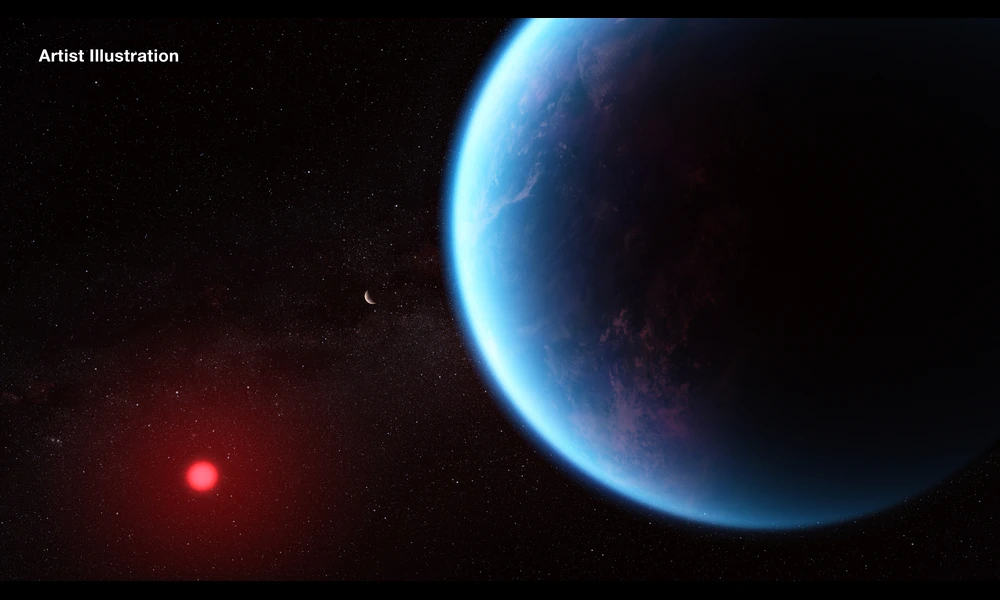Neptune-Like Exoplanets' Deep Atmospheres Warmer Than Previously Thought
Published on Sun Feb 11 2024 Webb Discovers Methane, Carbon Dioxide in Atmosphere of Exoplanet K2-18 b (Artist Illustration) | NASA's James Webb Space Telescope on Flickr
Webb Discovers Methane, Carbon Dioxide in Atmosphere of Exoplanet K2-18 b (Artist Illustration) | NASA's James Webb Space Telescope on FlickrA recent study from researchers in France has taken a closer look at the structure and dynamics of Neptune-like exoplanets' atmospheres, revealing some fascinating insights that could reshape our understanding of these distant worlds. At the heart of their research, conducted through detailed 3D simulations, is the intriguing process of moist-convection inhibition in hydrogen-rich atmospheres, with a special focus on the prototypical temperate Neptune-like planet, K2-18 b. The findings, which confirm the theoretical prediction of a shutdown in moist convection beyond a certain threshold of condensable vapor abundance, paint a picture of much hotter deep atmospheres and interiors for planets like K2-18 b compared to what has been previously envisaged.
Convection, a fundamental atmospheric process driving the climate and weather systems on planets, can be significantly affected by the composition of the atmosphere itself. In the case of K2-18 b, the researchers discovered that when its hydrogen-dominated atmosphere becomes enriched with condensable vapors like water, convection can be entirely halted above a critical vapor abundance. This cessation leads to the formation of a stably stratified layer which acts as a barrier to energy and particle exchange between the deep atmosphere and the planet's outer layers. The resulting structure has profound implications, leading to hotter conditions in the depths of the planet than standard models predict.
This research not only deepens our understanding of the atmospheric dynamics of Neptune-like exoplanets but also suggests that the chemical composition seen from light emitted or absorbed by these planets could act as a tracer for this convective inhibition process. Such insights are critical for the interpretation of data from telescopes like the James Webb Space Telescope (JWST), which observes the chemical fingerprints in the atmospheres of distant worlds.
Further examination within the study also touches on the potential for liquid oceans beneath such atmospheres. Using K2-18 b as a reference, the team explored the conditions under which a liquid ocean could exist, shedding light on the challenges posed by the planet's insolation level and the consequent requirements for a very high albedo - a measure of reflectivity - to prevent a runaway greenhouse effect that would boil away any surface water. This aspect of their work not only contributes to our understanding of habitability in other solar systems but critically evaluates recent suggestions of a possible ocean beneath the atmosphere of K2-18 b.
In a broader context, this research emphasizes the intricacies of extraterrestrial climates and their dependency on atmospheric composition. It underscores the importance of considering the dynamic and often unpredictable nature of convection processes when modeling exoplanet atmospheres, pushing the boundary of our knowledge further into the cosmos and opening up new avenues for exploration in the quest to understand worlds beyond our own.



